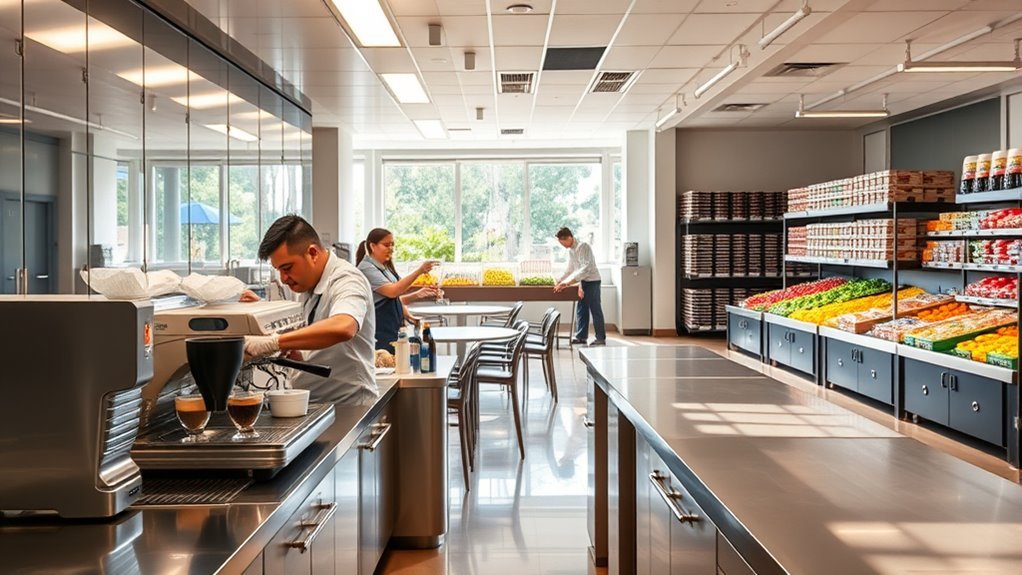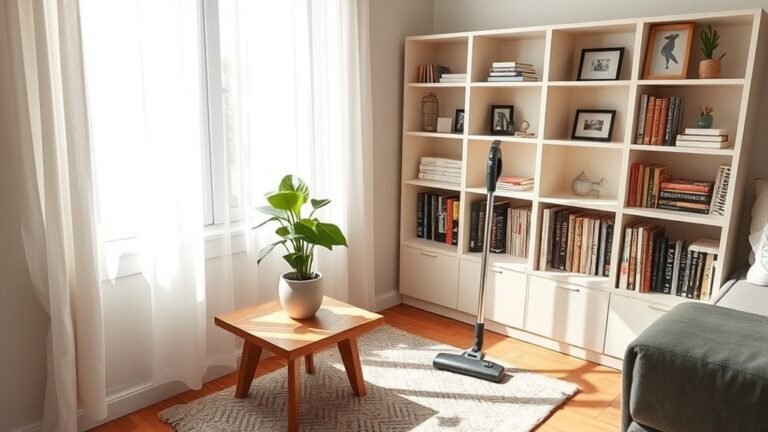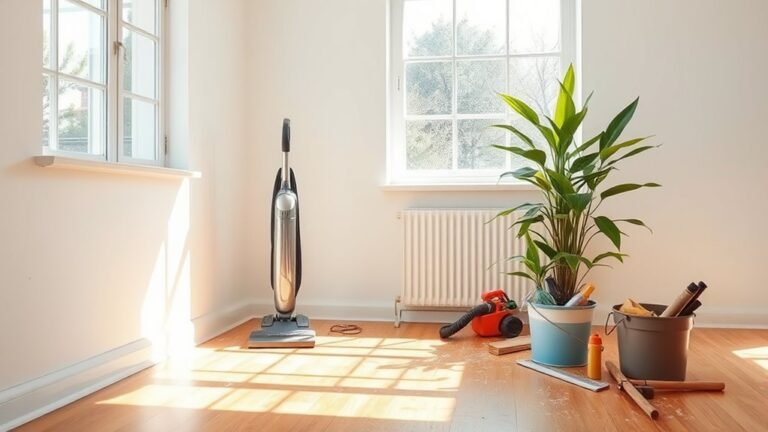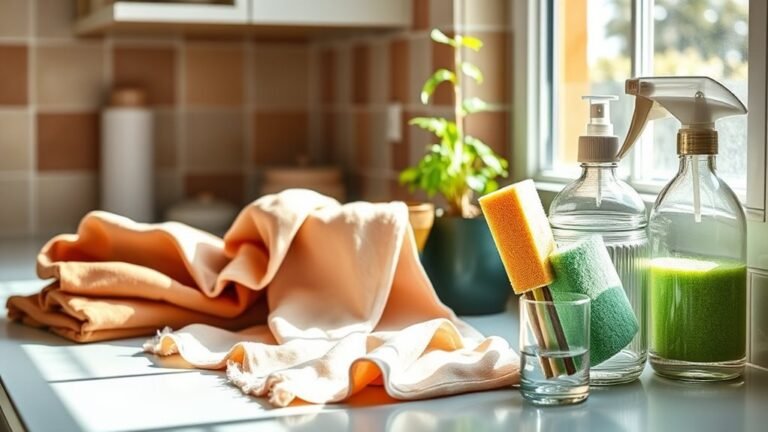Cleaning Strategies for Restaurants and Cafes
You should clean food prep areas daily using a checklist to cut contamination risks and keep your space safe. Focus on mopping floors and disinfecting surfaces regularly, plus properly clean kitchen equipment with scheduled deep cleans. Manage waste by sorting recyclables and trash, and train your staff on hygiene best practices. Sticking to these strategies helps maintain health standards and equipment longevity. Keep going to discover more ways to streamline your cleaning process effectively.
Daily Cleaning Routines for Food Preparation Areas
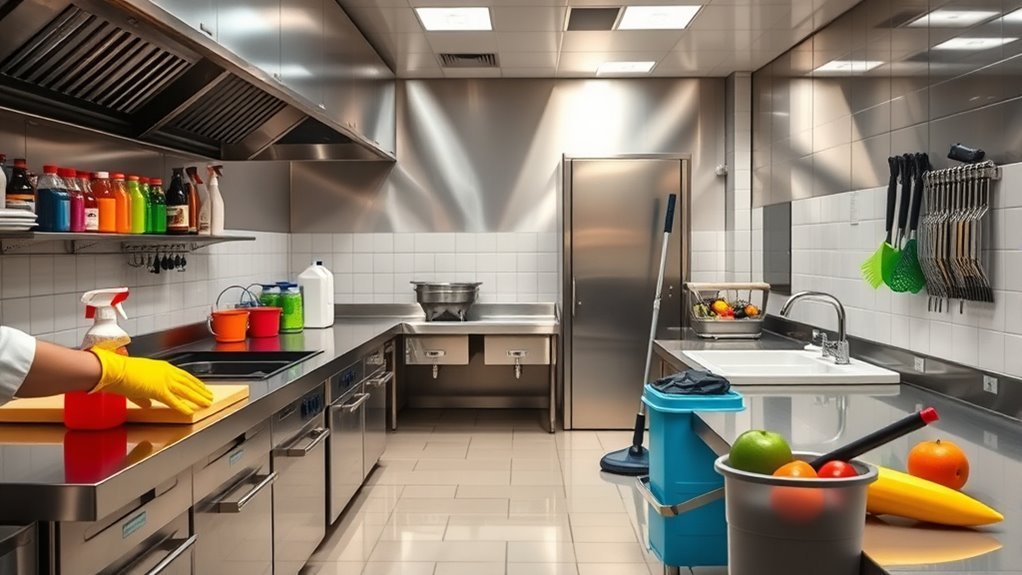
Since food preparation areas are where contamination risks are highest, you need to clean them thoroughly every day. Stick to a well-structured cleaning checklist to keep things straightforward and effective. These checklists help you stay on track without wasting time, ensuring every surface and tool gets the attention it needs. Regular hygiene inspections aren’t just about compliance—they give you the freedom to operate confidently, knowing your space is safe. By following a consistent daily routine, you reduce contamination risks and create a healthier environment for your staff and customers. You’ll find that maintaining cleanliness becomes less of a chore and more of a smooth habit, freeing you up to focus on what matters most—running your business with ease and pride.
Effective Floor and Surface Sanitation Techniques
Maintaining clean food preparation areas is just one part of keeping your restaurant or cafe sanitary. You’ve got to stay on top of floor cleaning, too, because dirty floors can quickly become a breeding ground for bacteria and pests. Use a reliable mop and appropriate cleaning solutions to tackle spills and grime daily. For surface disinfection, focus on high-touch spots like counters and tables. Choose disinfectants that are effective yet safe for food environments, and follow the proper contact times to kill germs. Don’t forget to clean utensils and equipment surfaces regularly to prevent cross-contamination. By mastering effective floor cleaning and surface disinfection, you’ll create a healthier space that lets you and your staff work freely without worrying about hidden hazards.
Managing Waste and Recycling in Food Service Spaces
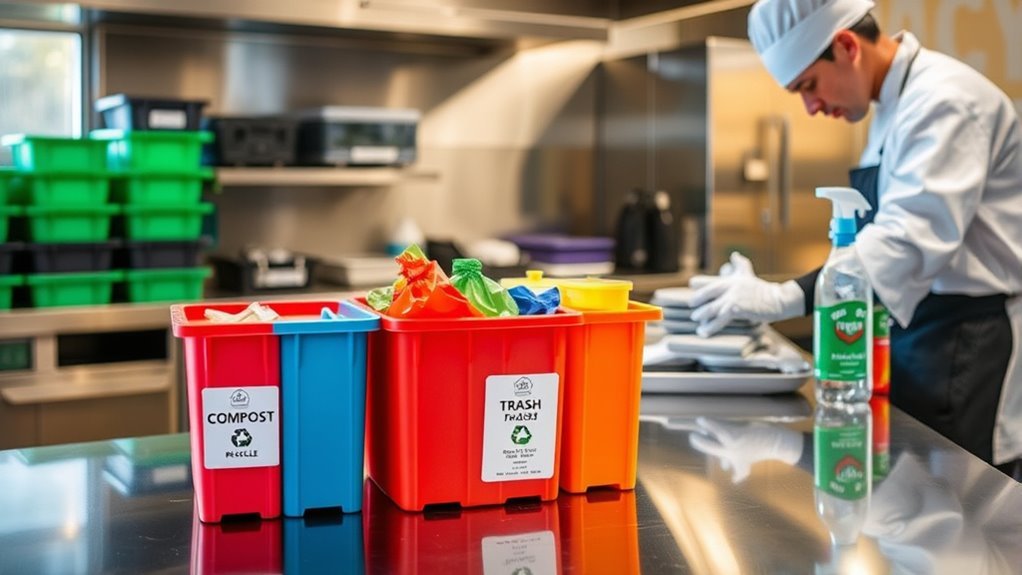
Although keeping your restaurant or cafe spotless is essential, managing waste and recycling is equally important to maintain a healthy and eco-friendly environment. You can embrace freedom in your operations by implementing effective waste segregation and participating in local recycling programs. Here’s how to get started:
Maintaining cleanliness and efficient waste management is key to a healthy, eco-friendly restaurant environment.
- Set up clearly labeled bins for organic waste, recyclables, and landfill trash to make waste segregation effortless for your staff and customers.
- Partner with recycling programs tailored to food service spaces to guarantee materials like cardboard, plastics, and glass are properly processed.
- Train your team regularly on sorting rules and the environmental benefits of recycling, empowering them to contribute actively.
Deep Cleaning Schedules for Kitchen Equipment
When you run a busy kitchen, deep cleaning your equipment on a regular schedule is essential to keep everything running smoothly and safely. Establish your deep cleaning frequency based on the type of equipment and how often you use it. For example, ovens and fryers may need weekly deep cleaning, while refrigerators might require monthly attention. Sticking to a consistent schedule not only extends your equipment’s lifespan but guarantees thorough equipment sanitization, reducing the risk of contamination. Create a clear checklist to track cleaning tasks and avoid missing critical steps. By committing to a disciplined deep cleaning routine, you free yourself from unexpected breakdowns and health code issues, giving you peace of mind and more time to focus on what truly matters—delivering great food and service.
Training Staff on Hygiene and Cleaning Best Practices
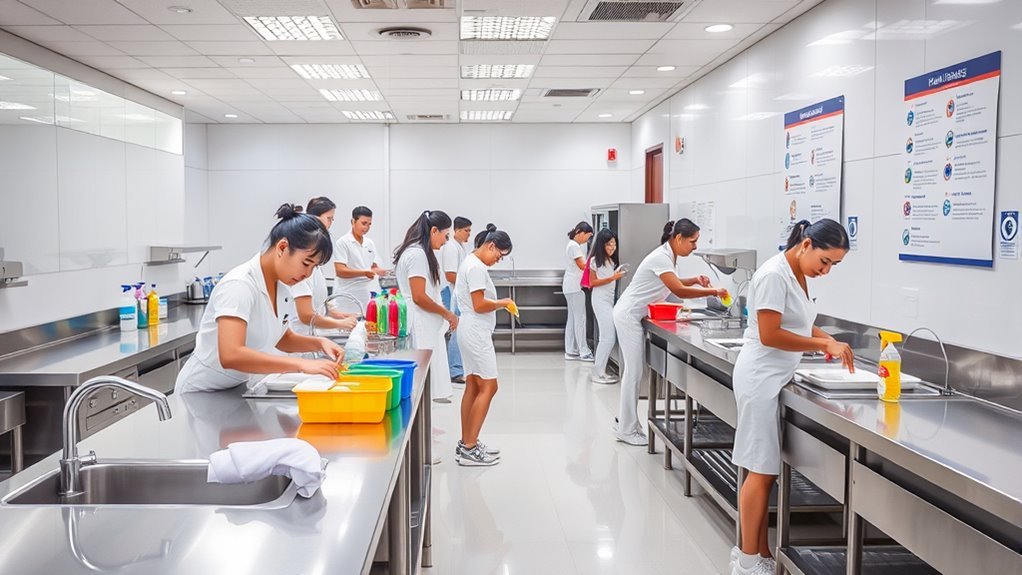
Since your staff directly handles food and cleaning tasks, training them on proper hygiene and cleaning best practices is essential to prevent contamination and guarantee a safe environment. Effective hygiene training empowers your team to maintain high standards while feeling confident and independent in their roles. Here’s how to approach it:
- Clearly outline cleaning protocols, specifying what needs cleaning, how often, and with which products to avoid confusion.
- Conduct hands-on sessions so your staff can practice techniques, ask questions, and understand the importance of each step.
- Regularly review and update training materials to reflect the latest health guidelines, ensuring your team stays informed and compliant.
Frequently Asked Questions
How Often Should Air Vents Be Cleaned in Restaurants and Cafes?
You should keep an eye on vent cleaning frequency to guarantee your space feels fresh and inviting. Generally, air vents need cleaning every 3 to 6 months to maintain peak air quality maintenance. If your place gets busy or has cooking odors, more frequent cleaning helps. Staying on top of this frees you from air quality worries, letting your customers enjoy a comfortable, clean atmosphere without hassle or restrictions.
What Are the Best Eco-Friendly Cleaning Products for Food Service Areas?
When choosing the best eco-friendly cleaning products, you’ll want to go for biodegradable detergents that break down naturally without harming the environment. Pair those with natural disinfectants like vinegar or tea tree oil—you’ll keep your space safe without harsh chemicals. These options let you maintain a clean, healthy area while staying true to your values and freedom to choose sustainable solutions that protect both your customers and the planet.
How Can Pest Control Be Integrated With Cleaning Routines?
Oh sure, just invite pests in for tea while you’re at it! But seriously, you can’t just hope they stay away. You’ve gotta integrate pest detection into your cleaning schedules, making it as natural as breathing freedom into your space. Regular inspections and cleaning keep those unwanted freeloaders in check without chains—so your place stays clean and pest-free, letting you run your business on your own terms, no compromises needed.
What Is the Impact of Lighting on Cleanliness Perception?
You’ll find that lighting effects play a huge role in how cleanliness standards are perceived. Bright, well-placed lighting highlights every corner, making spaces look spotless and inviting. On the flip side, dim or uneven lighting can hide dirt and create a less trustworthy vibe. So, if you want people to feel free and comfortable, focusing on good lighting can boost their confidence in your space’s cleanliness without feeling rigid or overbearing.
How to Manage Cleaning During Peak Business Hours?
Picture a busy dance floor where every move counts—that’s how managing cleaning during peak hours feels. You’ll need well-planned cleaning schedules that fit seamlessly into the rush, so nothing’s missed. Staff training is key; your team should be swift and efficient without disrupting the flow. When everyone knows their role, you’re free to focus on what matters most—delighting your guests while keeping things spotless behind the scenes.
